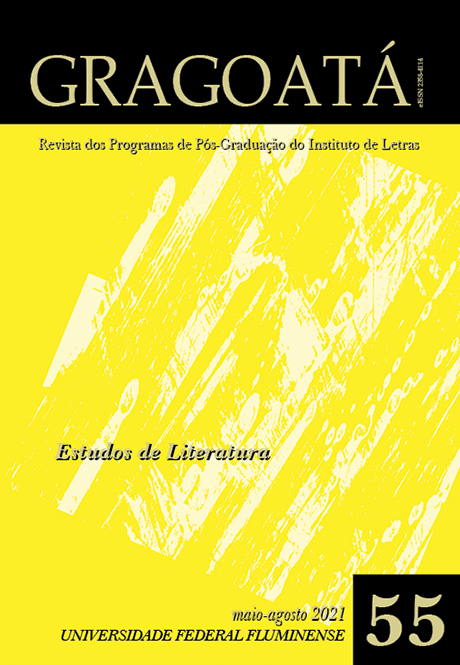Paisagem com Mulher e Mar ao Fundo: How to Forget the Flow and Backflow of Waves?
DOI:
https://doi.org/10.22409/gragoata.v26i55.47650Abstract
Assuming that "history and art teach that revolt is usually born from mourning and spreads in a whirlwind that mixes personal and collective laments, the next and the distant, in an extraordinary collective emotion," Georges Didi-Huberman, philosopher and art historian, in the article "Waves, torrents and barricades," published in the Serrote Magazine edited by the Moreira Salles Institute, shows us how political uprisings or insurrections ("powers" or "waves"), in a gradual and imperceptible way, become capable of eroding a constituted power that was thought to be immovable ("dams" or "cliffs"). And this is exactly what we will find in Paisagem com mulher e mar ao fundo, a novel by Teolinda Gersão, one of the most renowned contemporary Portuguese writers, re-edited in 2019: the presence of a popular uprising, in a village by the sea, besieged by institutions and images of fascism, at the time of António de Oliveira Salazar's government. The novel in question, by metaphorically discussing the April 1974 Revolution, problematizes the concepts of dystopia and utopia, sets in motion "the circuit of affections, political bodies and helplessness," which, in the view of Vladimir Safatle, promotes "the end of the individual," circumscribing him as an agent of social transformation.
Downloads
Downloads
Published
How to Cite
Issue
Section
License
Authors who publish in Gragoatá agree to the following terms:
The authors retain the rights and give the journal the right to the first publication, simultaneously subject to a Creative Commons license CC-BY-NC 4.0, which allows sharing by third parties with due mention to the author and the first publication by Gragoatá.
Authors may enter into additional and separate contractual arrangements for the non-exclusive distribution of the published version of the work (for example, posting it in an institutional repository or publishing it in a book), with recognition of its initial publication in Gragoatá.

Gragoatá is licensed under a Creative Commons - Attribution-NonCommercial 4.0 International.











